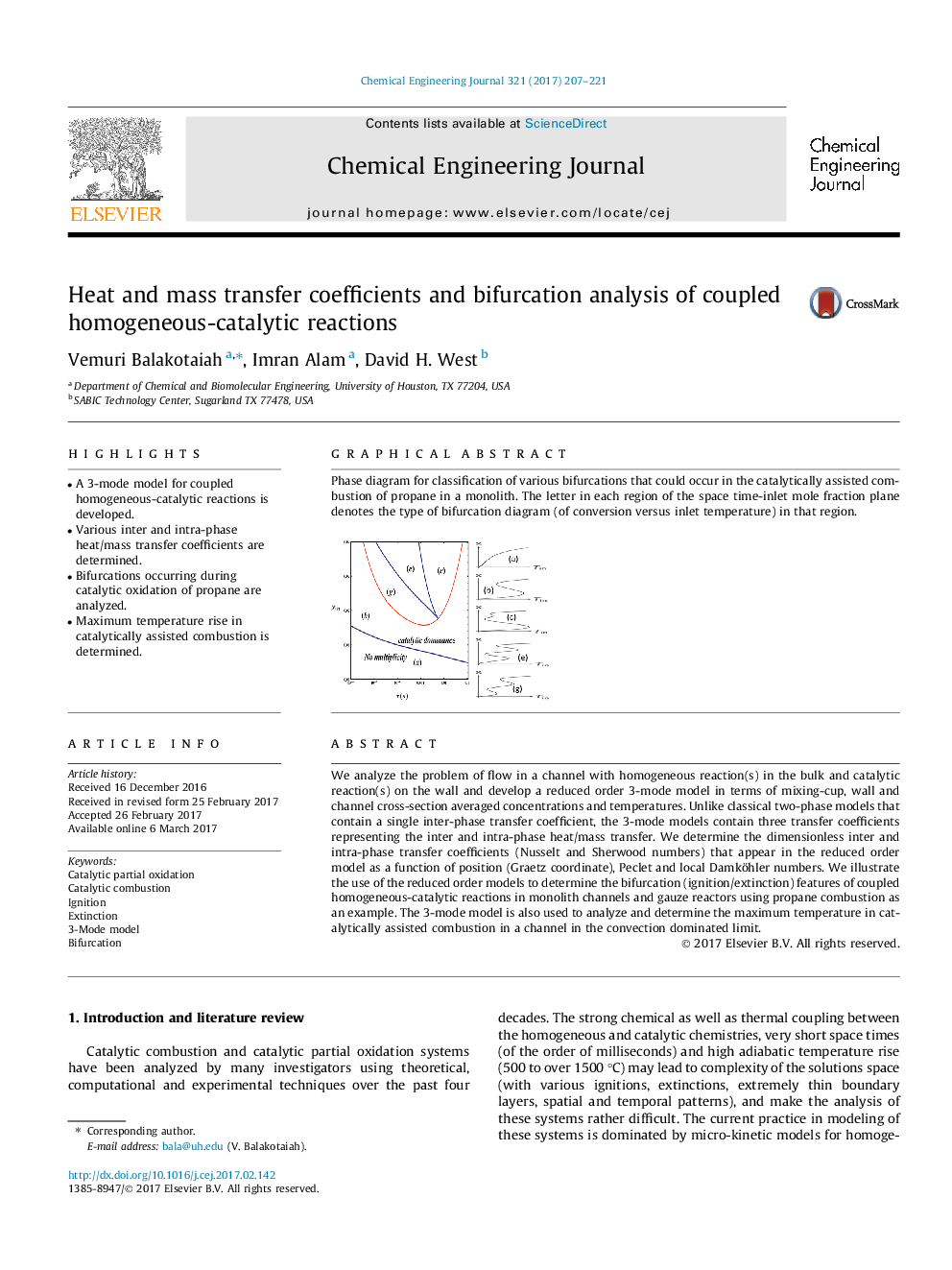| Article ID | Journal | Published Year | Pages | File Type |
|---|---|---|---|---|
| 6465844 | Chemical Engineering Journal | 2017 | 15 Pages |
â¢A 3-mode model for coupled homogeneous-catalytic reactions is developed.â¢Various inter and intra-phase heat/mass transfer coefficients are determined.â¢Bifurcations occurring during catalytic oxidation of propane are analyzed.â¢Maximum temperature rise in catalytically assisted combustion is determined.
We analyze the problem of flow in a channel with homogeneous reaction(s) in the bulk and catalytic reaction(s) on the wall and develop a reduced order 3-mode model in terms of mixing-cup, wall and channel cross-section averaged concentrations and temperatures. Unlike classical two-phase models that contain a single inter-phase transfer coefficient, the 3-mode models contain three transfer coefficients representing the inter and intra-phase heat/mass transfer. We determine the dimensionless inter and intra-phase transfer coefficients (Nusselt and Sherwood numbers) that appear in the reduced order model as a function of position (Graetz coordinate), Peclet and local Damköhler numbers. We illustrate the use of the reduced order models to determine the bifurcation (ignition/extinction) features of coupled homogeneous-catalytic reactions in monolith channels and gauze reactors using propane combustion as an example. The 3-mode model is also used to analyze and determine the maximum temperature in catalytically assisted combustion in a channel in the convection dominated limit.
Graphical abstractPhase diagram for classification of various bifurcations that could occur in the catalytically assisted combustion of propane in a monolith. The letter in each region of the space time-inlet mole fraction plane denotes the type of bifurcation diagram (of conversion versus inlet temperature) in that region.Download high-res image (57KB)Download full-size image
